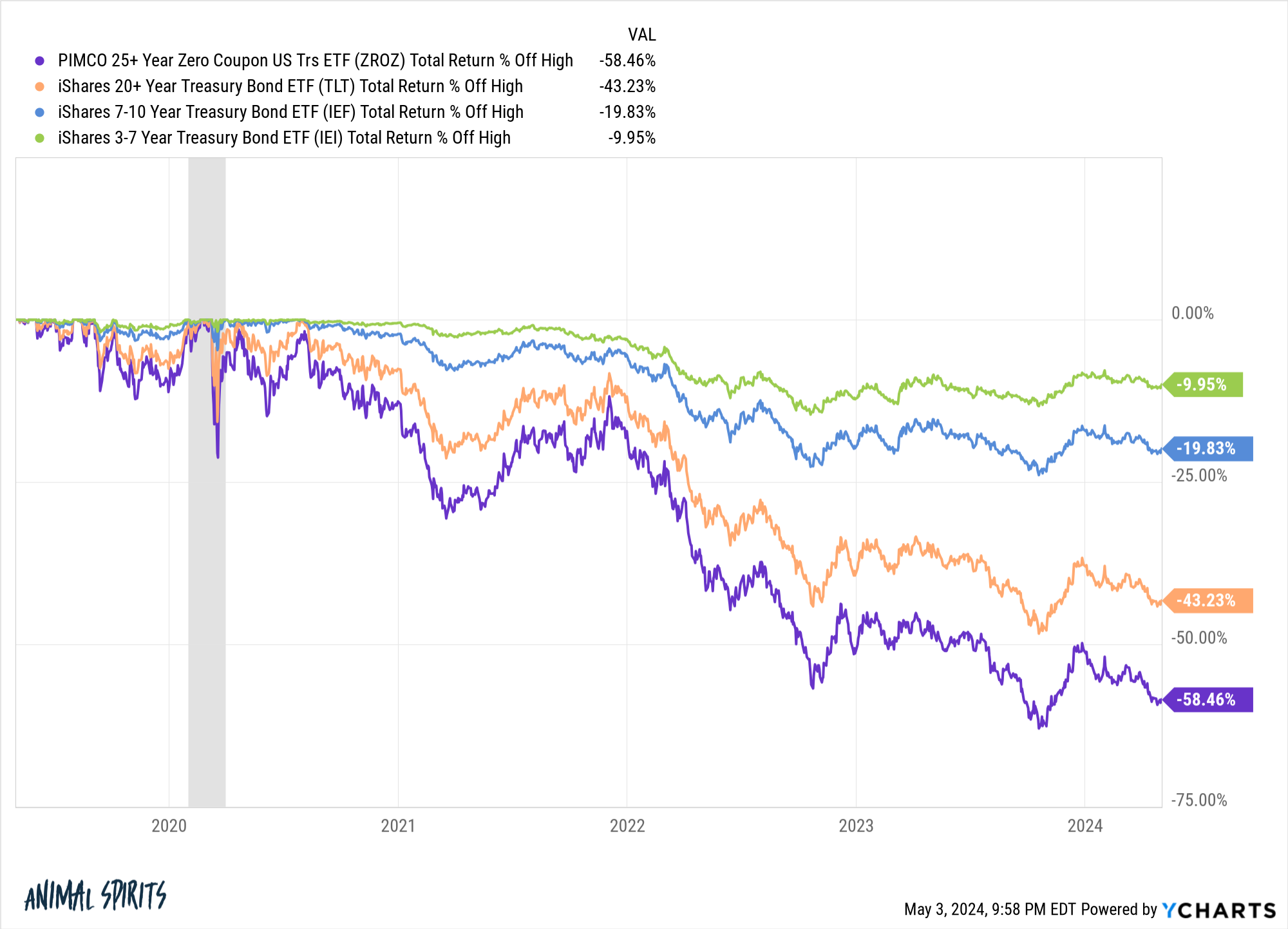I write a lot about bear markets.
Here is a random selection of my biggest hits from the last few years:
I focus on corrections, bear markets and crashes because these are the really important times for investors. Success as an investor relies on your actions in bad times.
These articles are all about the stock market, as there haven't been many downturns in the bond market in the past. Bonds are boring and not as volatile as the stock market – most of the time.
The Fed rushed interest rates to 5% from 0% during the pandemic as inflation accelerated:
When interest rates rise, bond prices fall. When interest rates rise quickly, bond prices fall quickly.
The Bloomberg Aggregate Bond Index is currently experiencing its largest decline since its inception in 1976, both in magnitude and duration:

At its low point, Agg was down more than 18%. It's still down double digits.
Other areas of the bond market are still in the midst of even worse declines:

Zero-coupon bonds, which are essentially long-term bonds on steroids, are still down nearly 60%. Long-term government bonds are still down more than 40%. Even 7- to 10-year Treasury bonds are down 20%.
All of these numbers include interest, but it's even worse than it looks because inflation has taken another 20% or so off the top.
So why aren't investors panicking even more?
Can you imagine if we were four years after a stock market crash and losses were still between 40 and 60%?
There would be endless headlines in the financial media. Investors would freak out.
Still, bond investors appear relatively calm. In fact, money is flowing into long-term government bonds, despite the route:

A lot of this has to do with investors bracing for lower interest rates that haven't happened yet, but it's not that people are looking for an exit.
Why don't more investors upset bonds?
Some thoughts:
Yield is important. Bonds were killed because interest rates rose. Now that interest rates have risen, yields are higher. Investors like higher returns!
The losses are a thing of the past. Income is the future.
There is an alternative. During a stock market crash, there are generally few places to hide. Sure, low-volume or high-quality dividend stocks may not fall nearly as much as the overall market, but a 30% loss instead of a 40% drop offers little comfort.
There are much better alternatives for reducing volatility in fixed income securities.
Treasury bonds have returned over 4% for almost two years. Yields on ultra-short-term government bonds have been above 5% for more than a year.
Additionally, you have money market funds, online savings accounts, and CDs that offer similarly high returns.
There aren't too many investors who have a high allocation to the areas of the bond market with the biggest losses because better options were available.
Stocks and bonds are different. For bonds, the expected return is determined more by mathematics than for stocks.
Buying stocks when they fall is generally a wonderful strategy, but there is no guarantee that they will come back. Uncertainty is greater during a stock market downturn.
Bond yields could continue to rise at any time, but initial yields are a good indication of long-term expected returns. The yield tells the story of high-quality fixed-interest securities.
There are also more emotions associated with the stock market.
If anything, the bear market in bonds shows that investors, on average, continue to make smarter decisions.
The bear market was painful if you entered it with long-dated assets. However, if you were smart about how to make your bond allocation and spread your bets, the bond bear market wasn't all that painful.
And with returns now higher, the future looks much brighter from here.
Further reading:
The difference between stocks and bonds


Comments are closed.